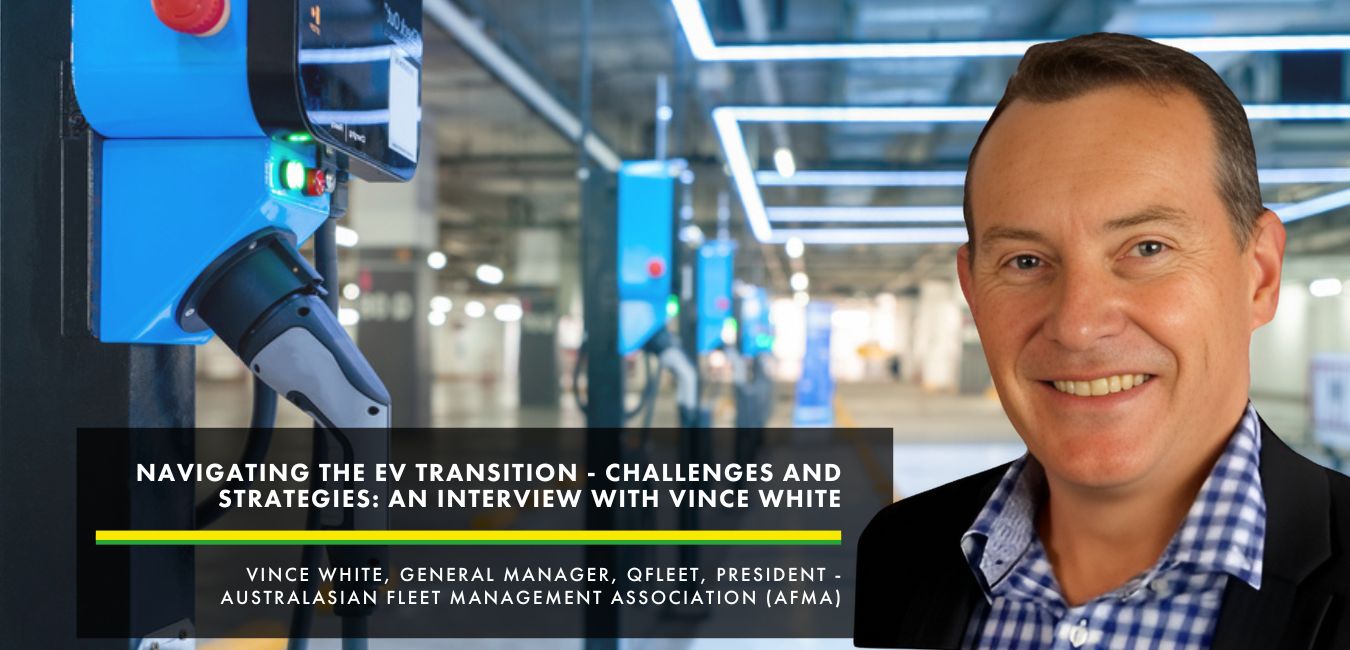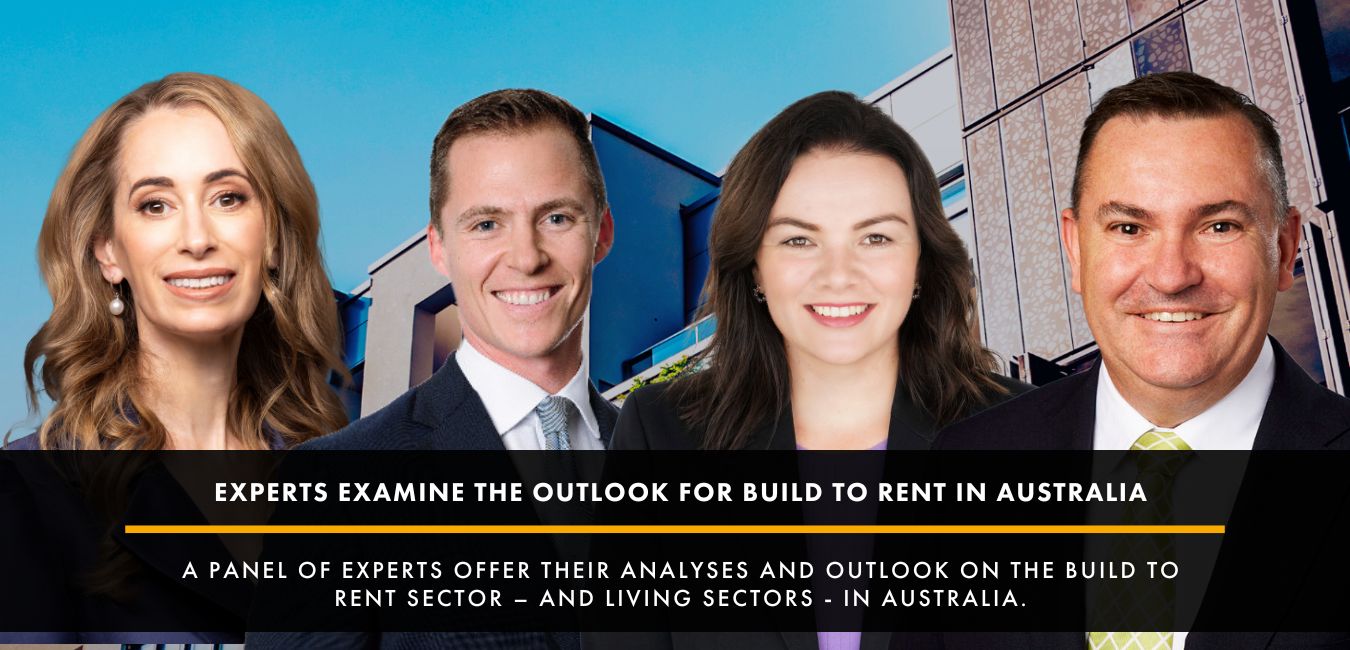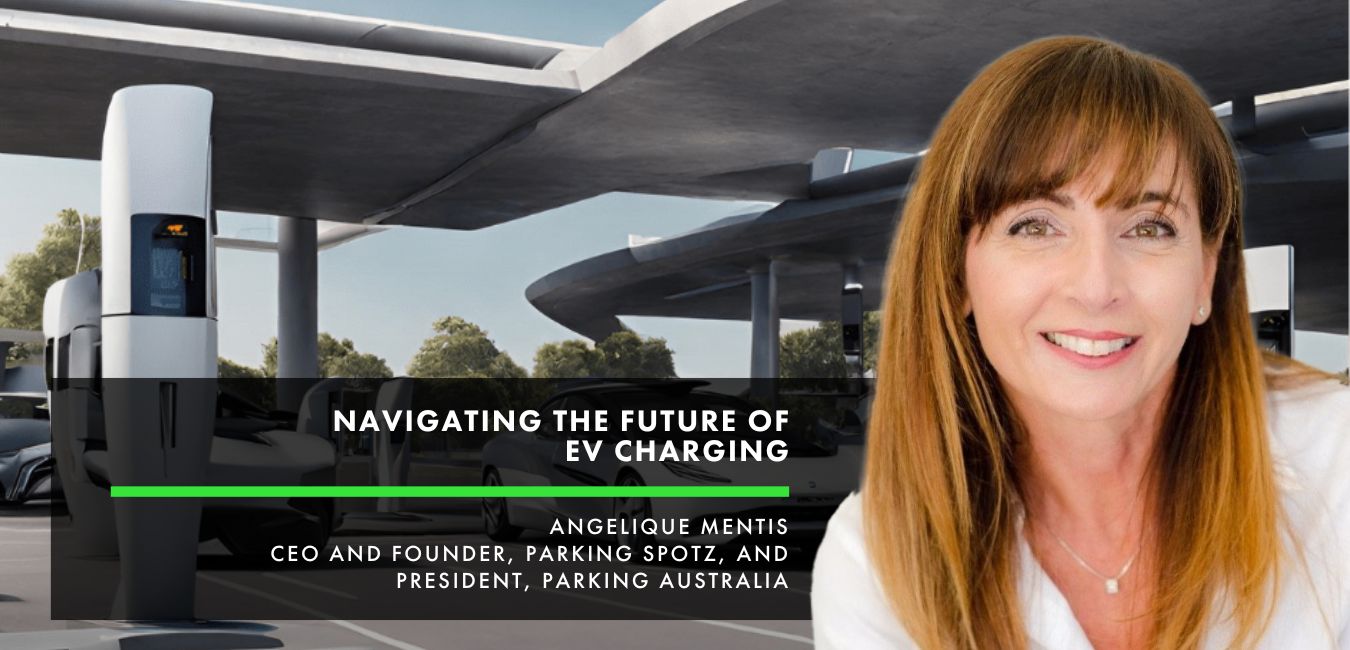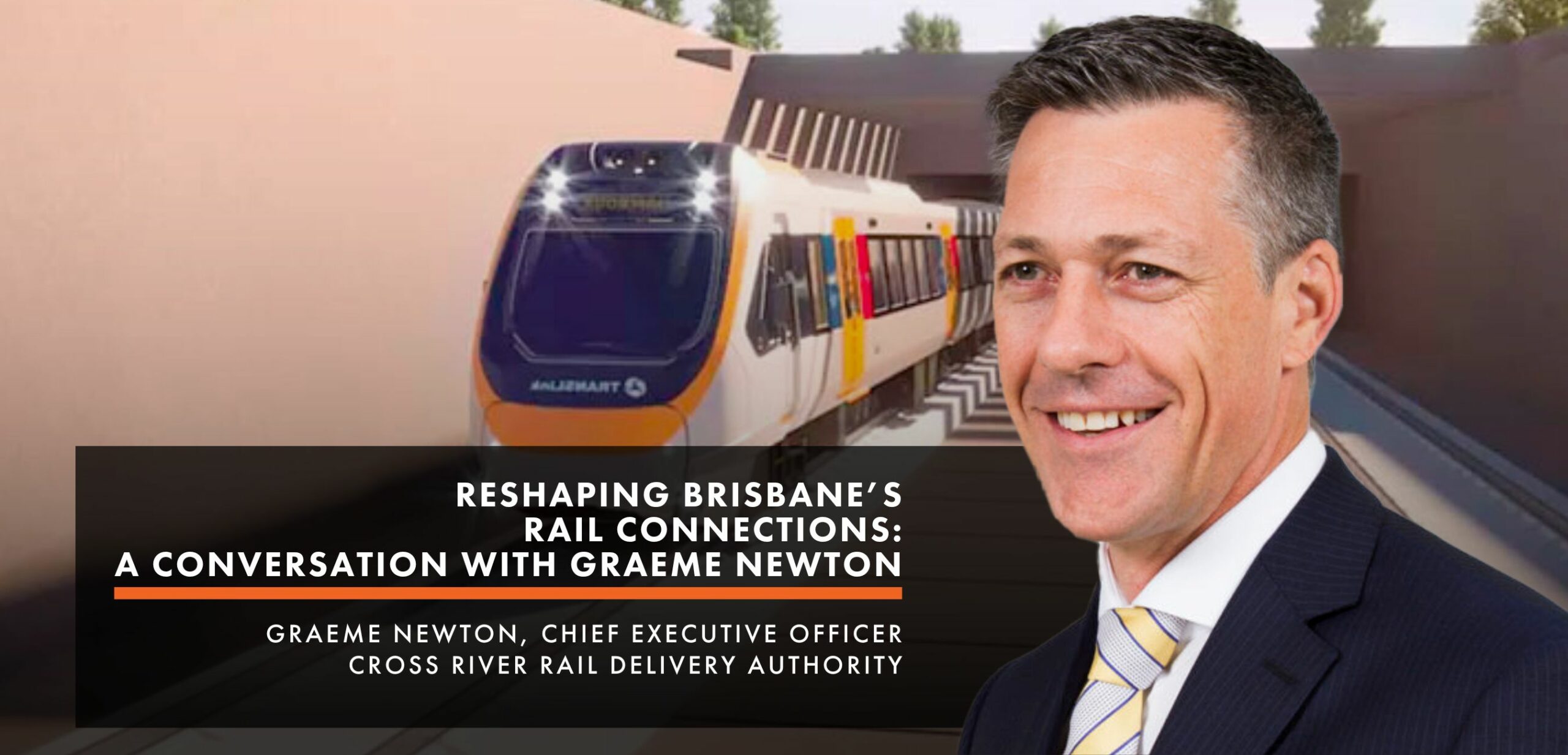FuturePlace Interview Spotlight, Vince White
FuturePlace recently interviewed Vince White, General Manager of QFleet, President of the Australasian Fleet Management Association (AfMA) where he discussed about navigating the EV transition, the challenges and strategies, using QFleet as an example. Vince highlighted the ongoing transition to electric vehicles (EVs) within the Queensland Government’s fleet management, emphasising strategic plans to reach long-term adoption goals. He also discussed challenges such as sourcing EVs and establishing charging infrastructure, underscoring the importance of addressing “charge anxiety” and navigating building-related obstacles.
FuturePlace: Can you share a little about QFleet’s EV transition planning – How many EVs do you currently run and what is the longer-term adoption strategy?
Vince White: QFleet is the fleet manager for the Queensland Government, providing vehicle leasing and strategic fleet management services for approximately 10,000 vehicles across Queensland. On 16 March 2022, in partnership with Transport and Main Roads, QFleet launched the Queensland Government’s Zero Emission Vehicle Strategy 2022-2032 (ZEV Strategy) and Action Plan 2022-2024 (Action Plan).
The current key priority action from the ZEV Strategy focuses on transitioning eligible passenger and SUV petrol and diesel vehicles to electric vehicles by the end of 2026. As of the end of January 2024, 42% (1,500 either active or on order – including over 850 active) of eligible vehicles have been transitioned.
FuturePlace: What are your thoughts on QFleet’s EV transition plan to date?
Vince White: Now that motor vehicle supply, in terms of volume, variety, and affordability of models, is improving and becoming less of an issue, more attention is being paid to the bigger barrier – EV charging infrastructure. The ready availability of public fast charging (i.e., 50kW chargers or faster) is critical for providing potential (and current) EV drivers with assurance they can charge when they need to.
“Charge anxiety,” i.e., concerns about where the chargers are and whether they will be available and/or working when needed, is not replacing range anxiety as a barrier for EV adoption. Availability of reliable and suitably quick public charging is cited as a major barrier/apprehension for QFleet customers regarding their willingness to transition from petrol cars to EVs.
An emerging issue among fleets (more so than private users) is the need to have a variety of apps and cards handy to cater to the variety of charging providers. Some providers are starting the development process to provide a “one-stop shop” card compatible with any charging device to make public charging easier for users.
FuturePlace: Can you share a little more about your EV transition planning process? Who was involved, and how did you approach the issue of determining the EVCI set-up? Was it as difficult as what people claim? We heard that there is a long list of back orders and production stalls across the EVCI value chain that make it a very slow process.
Vince White: The planning process was, and is being, coordinated across the Queensland Government and involved developing strategies for renewable power generation, EV transition, and EV charging infrastructure. The challenge initially was sourcing EVs; now, the challenge is EV charging infrastructure, and yes, it is as difficult as people claim! Supply chain issues aside, the buildings themselves are proving to be incredibly challenging. Building owners are reluctant to invest, there are power supply and capacity issues, insurance risks associated with perceived issues around fire safety, access issues, and surrounding infrastructure challenges.
FuturePlace: We know that despite the massive increase in EV uptake, there is still a lot of resistance from fleet managers and drivers regarding the challenges of fleet electrification and the transportation industry at large. Some of these issues relate to the cost of EVCI and EVs, and of course, the issue of range anxiety in rural areas. Many people would say these are very reasonable excuses and symptomatic of new technology that is still in development. What’s your opinion? What other reasons might there be behind the resistance? For instance, do we have enough EV-specific trained technicians to maintain new EV fleets? Can you share a little bit on what your members are telling you?
Vince White: The main reason given is regarding range anxiety and the availability of EV charging infrastructure, primarily in their workplace. This, combined with a natural aversion to change, means people are focused on their core business and do not have the time to learn about how to use and manage EVs. In some cases, the reasons are that simple.
Other reasons relate to the use of an EV during disaster events—power outages—how will EVs be charged? There is a perception of significant risk for first responders, emergency services, front line services, trades, community support, and anyone.
There needs to be a balanced approach. The transition to EV means transport and mobility become reliant on one ‘fuel source’, electricity. This is a significant risk, as electricity as a fuel source is very susceptible to outages at generation, transmission, and delivery. This could ‘ground’ the fleet, and the nation/region/city would grind to a halt.
EV vehicles are not a solution to all transport needs and environments. In some cases, it may not even be safe to use an EV. Analysis needs to be done to determine and recognize what is the most environmentally suitable vehicle to meet the needs.
EV battery degradation will see EVs become consumable products, useless at some point—i.e., uneconomical to repair. Therefore, consideration for the replacement battery market, ensuring manufacturers warrant batteries and have the ability to repair, must supply replacement batteries at a viable cost, and ensure the recycling industry is established.
Future Place: I know a key issue for fleet operators is getting the right electrical service strategy in place. Retrofitting for EVCI can be both complicated and expensive. Some report they struggle with the service providers who may face bureaucratic installation approval processes and uncertainty as to responsibilities for long-term EVCI maintenance. How was this process for you? Who would be the most important player in the EVCI space that you really need to manage carefully? Any tips for others about to embark on a major EVCI investment?
Vince White: Here are some tips:
- Develop a prioritised EVCI roll-out plan for the buildings where EVCI is to be located
- Explore complementary pathways to support net zero transport that can be considered for buildings EVCI readiness
- Plan and lead collaborative working sessions and workshops with building occupants fleet and facilities contacts, building owners and building owner’s facilities managers
- Carry out supporting background research (building electrical supply, capacity, access, fire safety, risk assessment, EVCI locations (number, type etc), government approvals/permits/code requirements)
- Develop a plan that can be used as an assessment framework in identifying priority EV charging locations
- Develop:
– Prioritised rollout plan
– Funding Assessment
– Technical Guidelines
– Procurement Guidelines/Panel
– Code of Conduct - Electric vehicle induction videos now on ForGov: To support you with your EV journey, we’ve added a number of new videos to the ForGov website. Feel free to share these with your drivers. They include:
– Tesla driver induction
– How to use a public charger
– General EV driver induction
FuturePlace: Finally, Vince, I wanted to drill down a little more on the financial challenges vs. the net zero targets that many operators will be operating under. The EV transition costs include the higher upfront costs of EVs compared to traditional petrol or diesel vehicles, the costs of installing and maintaining charging infrastructure, and the potential loss of revenue due to downtime during charging. What support is out there for fleet operators, and is it enough to tip the dial to support a faster EV adoption strategy? Would you say that the net zero targets for the mobility sector are reasonable given the cost issues? Any other thoughts on how we can accelerate the EV transition strategy?
Vince White: The global demand for EVs currently outstrips supply, with many countries driving internal demand through incentives and clear policies, while EV manufacturers choose to distribute their vehicles where the best economic outcomes can be achieved, i.e., through profit or avoidance of fines and penalties. Evidence from Europe and the USA clearly demonstrates that a fuel efficiency standard reduces vehicle emissions.
The Department of Energy and Climate (DEC) supports the introduction of a robust and ambitious fuel efficiency standard to incentivise the supply of EV models to the Australian market – as soon as practicable.
Importantly, a fuel efficiency standard only applies to new vehicles and does not ban the sale of any particular type of vehicle or affect the vehicles already on the roads. Manufacturers that do not meet these targets will be financially penalised by the government.
Generally speaking, EVs are cheaper to operate than ICE vehicles due to electricity being much cheaper than petrol/diesel. Depending on the annual kilometers traveled and the vehicle type, an EV could save between $1,500 and $2,000 per year in running costs (i.e., “fuel” + servicing cheaper in an EV) compared with an ICE equivalent.
The upfront capital outlay for an EV can be much higher than an ICE vehicle, although this gap is reducing in certain vehicle segments, i.e., Toyota Corolla vs. MG4, Toyota RAV4 Hybrid vs. BYD Atto 3.
Where the purchase price gap is smaller, the case for an EV over ICE is more compelling.
EV infrastructure summit
Vince will be speaking at the EV Infrastructure Summit to explore industrial fleets and depots – Transforming to net zero, taking place on 4-5 June 2024 in Sydney.
It bring together over 300 senior executives from real estate asset owners, developers, investors, city governments, utilities/grid operators, infrastructure, urban design, sustainability experts and EV/Mobility players to discuss the latest industry developments and opportunities.







